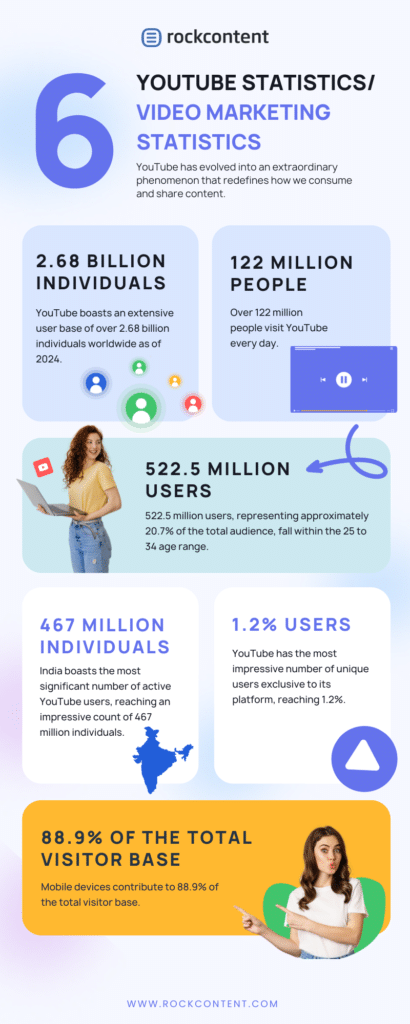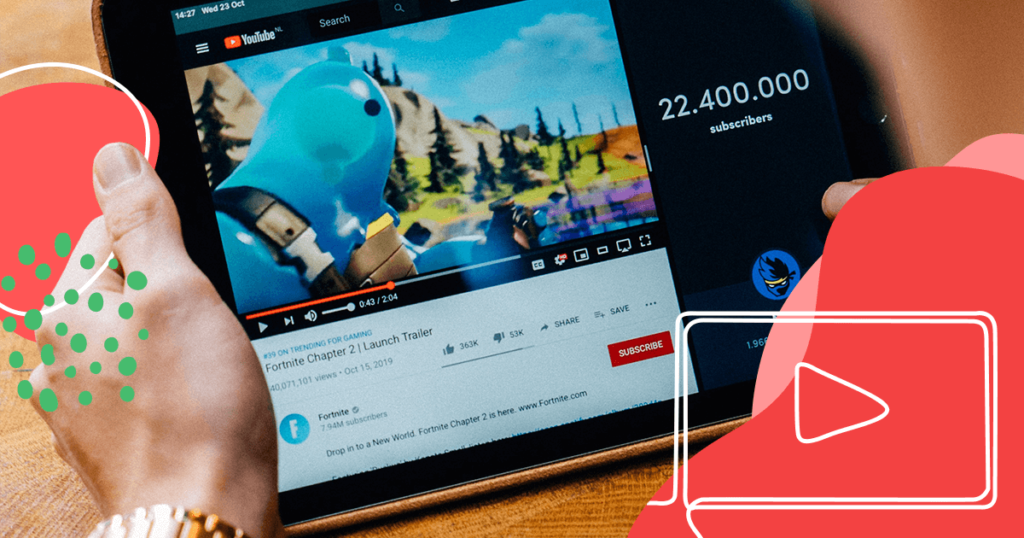Whether you’re focused on digital marketing, public announcements, discussing your favorite board game, or any other topic. Nowadays, we all tend to reflexively look toward social media when we want information to reach the masses.
YouTube has some of the largest numbers and best results among social media audiences. If you want to get the word out there, it’s arguably the best platform at your fingertips.
However, making use of YouTube does require some knowledge. Namely, if you can understand the algorithm, everything else follows.
In a well-known interview, Rene Ritchie, YouTube’s Creator Liaison, and Todd Beaupré, YouTube’s Growth and Discovery Lead, discussed the nature of YouTube’s algorithm and its implications for creators.
Using this information and additional resources following the interview, we can untangle the mysteries of the YouTube algorithm and help you build an effective digital marketing strategy. Considering the timeline of the YouTube algorithm’s evolution, we can see how it works now and what we can expect moving forward.
With this information and guide, you will be equipped to tackle marketing, reach larger audiences, and get your message where you want and where it is needed most.
- What Is the YouTube Algorithm?
- What Do We Know About YouTube’s Algorithm So Far?
- What Has Changed in the YouTube Algorithm Since 2015?
- How Do YouTube Algorithm Changes Impact Creators and Brands?
- Final Remarks
What Is the YouTube Algorithm?
Most of us have at least a notion of what the “YouTube algorithm” refers to, but some specifics can help clarify.
The YouTube algorithm is the set of rules that governs how users see videos when they use the app or website.
Look at it this way. If you pull up YouTube right now, you will see a bunch of videos. With billions of videos available, why are those the ones you see right away? The algorithm answers that question.
The trick is that YouTube does not publicize how the algorithm works. We know they use rules and automation for recommendations, but the exact set of rules is a genuine mystery. Nevertheless, many experts have tried to deduce the algorithm’s secrets. Combined with very public announcements by YouTube officials, we know enough to form educated strategies.
As we explore the many details available, remember one guiding principle: the overarching goal of the YouTube algorithm is to match content to users. YouTube wants to show people videos they want to watch. That’s always the bottom line.
What Do We Know About YouTube’s Algorithm So Far?
Before we discuss what changes moving forward, it is important to take a step back and see what we’ve learned about YouTube’s algorithms during recent years.
1. Clicks and views
In the early years, after being created in 2005, the platform needed views to consolidate itself as a strong video platform. Since everything revolved around the audience and views, YouTube’s first algorithm recommended videos that attracted the most views or clicks. The more people clicked on the video, the more it would appear for others to click on, too.
This lasted until 2011 when the platform realized this kind of recommendation led to the practice known as clickbait: titles and thumbnails meticulously crafted to attract clicks, without worrying about the video content or user experience with the video itself.
2. Watch time
Aiming to bypass the clickbait movement, in 2012 the platform started to consider video time watched, and overall time spent on the platform – a way to measure not just the clicks on the video, but also its relevance for users. The motto was: make videos your audience wants to watch, and the algorithm will reward you.
The problem was: The platform did not consider the video size, or differentiate the video watched time from the overall time spent on the platforms. Things got a little confusing for creators, and the platform decided to persuade another path for the algorithm.
3. Satisfaction
Ok – then it was time to hear from the audience. Trying to measure its behavior was not bringing good results, so in 2015 the platform decided to ask users about their satisfaction levels, collecting information directly from the source through user surveys.
So, instead of recommending videos that other people are watching, YouTube started to recommend videos that each particular viewer would have more propensity to watch. And, well, the results were pretty good! In 2018, 70% of watch time on YouTube was spent watching recommended videos.
Who could possibly imagine that listening to your audience would be the right path after all, huh?!
What Has Changed in the YouTube Algorithm Since 2015?
Even if the goal has remained the same, many YouTube algorithm changes have occurred over the years.
The first might be the most surprising. It wasn’t until 2015 that YouTube decision-makers formalized the absolute rule we now take for granted. That was when they decided user satisfaction was the most critical metric. Changes since then reflect that, but they are still worth listing:
- The major 2015 update developed criteria that recommend videos based on individual behavior. This change reduced the emphasis on end-of-video surveys.
- In 2016, YouTube announced more information. This time, a white paper explained that deep neural networks controlled recommendations.
- 2018 saw another announcement in which YouTube explained that 70 percent of all watch time came from algorithm recommendations.
- In 2019, YouTube described measures to improve brand safety. Most notably, they increased aggression with demonetization for content deemed unsafe or improperly categorized for younger viewers.
- Since 2019, additional recommendation adjustments aim to keep YouTube within American, European, and other regulatory requirements regarding harmful or misleading content. The company also announced best practices to stay within YouTube requirements and guidelines.
These updates do not constitute every minute change made to the algorithm over the years, but they highlight how YouTube has shifted priorities. Despite these shifts, YouTube still prioritizes content value and watch time above all else.
How Do YouTube Algorithm Changes Impact Creators and Brands?
Let’s return to what you can take away as a content creator or video marketer.
First, video is still king. Video outreach has the highest ROI of any media format. That has been true for several years and will likely remain valid for the foreseeable future.
More specifically, YouTube has the largest user base of any video streaming platform, with more than 2.6 billion active users. Compare that to TikTok’s 1.5 billion users or Netflix’s 270 million users, and it paints a clear picture. YouTube also has the most users in the U.S. at 239 million. Not stopping there, YouTube has the most watch time and highest engagement to boot.

As compelling as these numbers are, YouTube algorithm updates influence more than how many people you can reach. They also determine how you should strategize your content.
The good news is that the golden rule has not changed. Try to provide people with content they appreciate, and you’re off to a good start. As for safe content restrictions, appropriately labeling your content does more good than anything else. If the content is kid-friendly, you can label it that way. If it isn’t kid-friendly (or if you aren’t sure), label it for adults only, and you can skip many potential issues.
Building on that idea, content creators prioritizing long-term relationships with their audiences will have better recommendations than creators aiming for short-term gains. This favors consistent upload schedules and quality.
Final Remarks
YouTube makes it easy to track your quality through engagement metrics. These metrics include how many people click on your videos, and what percentage of the videos they watch. How many times they watch, how often they watch more of your videos after the first, whether they like or dislike them, and when they comment on them.
In general, if your engagement metrics go up, that’s good for your channel and your place within YouTube recommendations.
A final notable change was introduced in 2023 and appears to hold firm moving forward. YouTube wants to put more energy into promoting smaller creators. Instead of funneling everyone to the same handful of juggernauts, YouTube regularly mixes in more creators with smaller followings. You might even notice that on your own “recommended” page.
This is excellent news for anyone planning to build a YouTube audience.
It’s important to highlight that the algorithm isn’t concerned about the video content – as long as it complies with the platform’s community guidelines and policies. It only cares about the user experience, considering the criteria we mentioned above.
With that in mind, one thing does not change: creators and brands should continue creating relevant content for their audience, and YouTube’s algorithm will recognize the effort – even more so if you have a long-term strategy being put into practice along with the good and relevant content.
Do you want to continue to be updated with Marketing best practices? I strongly suggest that you subscribe to The Beat, Rock Content’s interactive newsletter. We cover all the trends that matter in the Digital Marketing landscape. See you there!







